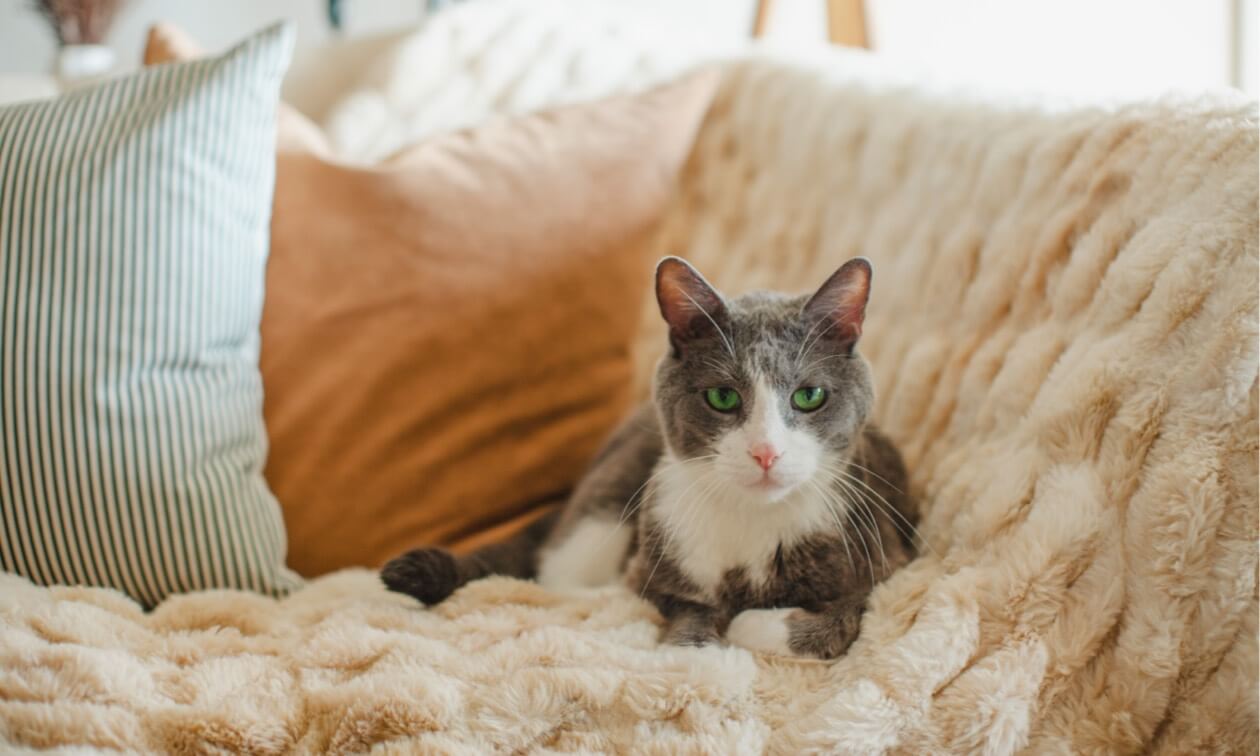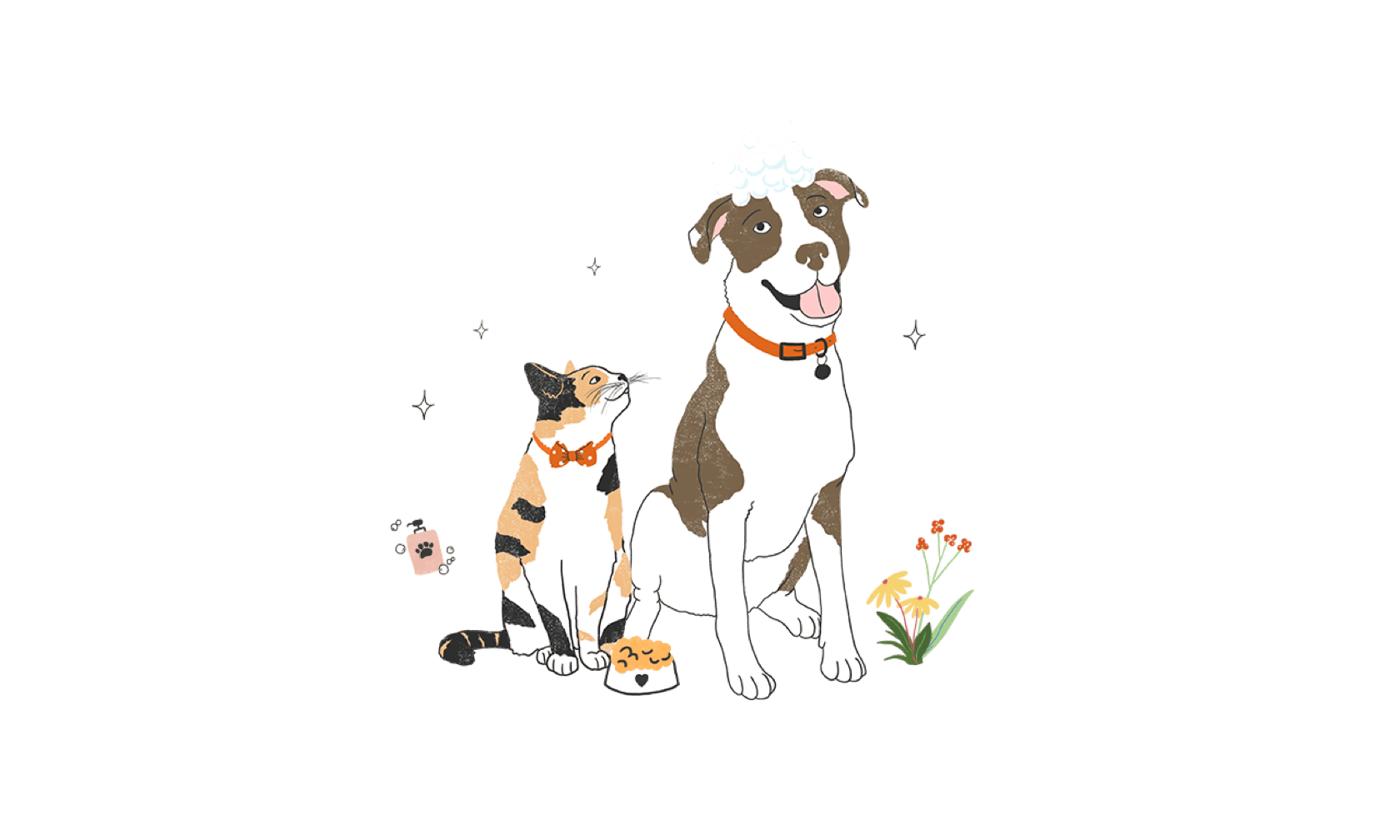Cat pee outside the litter box creates one of the worst smells. But don't panic — you can absolutely clean just about anything your cat may urinate on. It’s extra important that you clean pee spots properly to minimize the likelihood that they'll pee there again. It's all about using the right tools and a few key steps.
Why Does Cat Urine Smell So Bad?
You know instantly when that ammonia-like scent hits your nostrils. Why is it so potent? Cat urine is made up of a few different components, including water, uric acid, urea, sodium chloride, creatinine, detoxified substances, and electrolytes. As urine sits, bacteria start breaking down the urea and creating an ammonia-like smell. The uric acid also has an odor. The longer the urine sits without being properly cleaned up, the worse the smell gets and the harder it is to remove as these components decompose further, releasing sulfur-containing compounds called mercaptans which are also found in skunk spray and rotting meat.
The Best Products for Cleaning Cat Urine
If you're cleaning hard surfaces with no opportunity for the urine to soak into anything, you can use a standard disinfectant to wipe down the area after you've sopped up the urine (but never use this on soft surfaces).
For surfaces the urine can soak into, like carpet, rugs, blankets, and upholstery, you must use an enzymatic cleaner that breaks up the odor-causing molecules, including uric acid crystals and proteins, that have attached to the fibers of these surfaces.
Be aware that just because the bottle says it's an enzymatic (or enzyme) cleaner doesn't mean it's high quality. Read reviews and look for tests showing their effectiveness at doing more than just deodorizing.
How To Get Rid of Cat Pee Smell by Using an Enzymatic Cleaner
The effectiveness of even the best enzymatic cleaner hinges on using it properly. You can use these steps for new and old soiled spots. Just know that you may need to repeat the steps a few times with old urine stains to remove them completely. Check the manufacturer's instructions as well, as some formulations have specific guidelines for best results.
- Soak Up Any Standing Urine With a Cloth Or Paper Towel
Do this before you apply your cleaner. - Thoroughly Saturate the Area With the Cleaner
You must soak the spot completely with your cleaner. - Let It Air Dry
Give the soiled area at least 15 minutes to soak. Then you can blot up any cleaner that's sitting on the surface. It's important to let the rest of the cleaner air dry to allow the broken down odor-causing molecules to evaporate. If you rinse the cleaner out or dry the spot prematurely, you won't get rid of the smell. - Cover the Area
If you'd like, you can loosely cover the wet area with aluminum foil or something solid like a turned upside-down laundry basket or a chair raised up off the ground. This will keep the cat from peeing there again while you're working on cleaning up.
If you have old urine spots where you've previously used other cleaning products, like detergents, bleach, or vinegar, you may need to rinse the area with water before applying the enzymatic cleaner. Those other cleaners' residues can interfere with the enzymes you need to do all the work. You may be able to find a pre-treatment product designed to prepare for use of enzymatic cleaners by removing that residue.
How To Clean Cat Pee Out Of Furniture
The same process above applies when cleaning furniture such as couches, chairs, other upholstered furniture, and mattresses. Saturate the area completely, ensuring the cleaner gets all the way down into the cushions and inner material. Let it sit for 15 minutes, and then squeeze out the excess and leave it to air dry. You may need to repeat a few times for very thick items.
Removing Cat Urine from Laundry
Here are a few helpful tips for cleaning items that can be thrown in the washing machine:
- For Fresh Urine
Soak the item in an enzymatic cleaner for about 20 minutes, then wash on hot with your usual detergent. - For Dry Urine
Odor-causing molecules, including uric acid crystals, have already adhered to the fabric, so you may need to soak the item and let it dry a couple of times before laundering with your usual detergent. - If the Item Can Be Bleached Without Damage
Bleach can work fine on its own. Don't use it with the enzymatic cleaner as it will destroy the enzymes.
How Not To Clean Cat Urine
Not all cleaners are equal when it comes to cat pee. There are some products you want to avoid. Traditional household cleaners may help initially by cleaning and deodorizing the water-soluble elements in the urine, but without chemical breakdown of odor-causing molecules, a humid day will help uric acid crystals reform, and the smell will return. To make matters worse, using other products before or after the enzymatic cleaner will kill off the enzymes you're counting on to clean the soiled spot.
Avoid using:
- Soap/detergent
- Carpet cleaner
- Vinegar
- Ammonia
- Baking soda
- Hydrogen peroxide
To be safe, avoid pretty much anything other than an enzymatic cleaner and a pre-treatment product designed specifically for use with enzymatic cleaners.
It's also best to avoid spray deterrent products designed to keep your cat away from the area. They work by using a smell that makes cats uncomfortable, like citrus. You can't confine that smell to just the area where they've peed, so you're essentially creating a large space in your home that can be stressful for your cat. Stress can lead to house soiling, which can make the problem worse.
ZPC-02439



